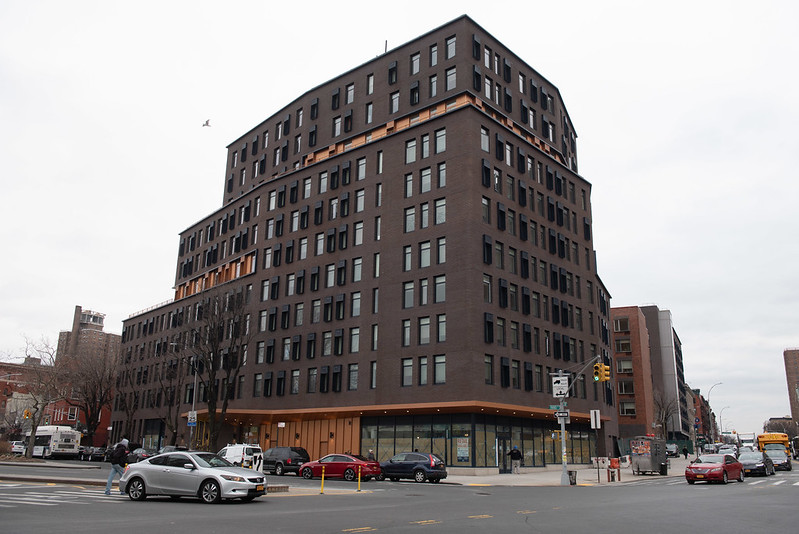
Affordable housing on the docket (photo: Michael Appleton/Mayoral Photography Office)
The great strength of New York is our diversity. Strangers from all walks of life share the subway, the sidewalk, and the park. Of course, it’s not perfect: spiking inequality coupled with an acute housing affordability crisis has fostered disparities that have been exacerbated by the pandemic. But very few large cities anywhere on the planet has our “gorgeous mosaic” of the well-off and the working class; the immigrant and the well-established; the young and the old; the cis- and fluid-gendered; Black, brown and white, all living, loving and striving in close proximity.
To support this mix, New York is a national leader in inclusionary housing. The inclusionary model is where subsidized apartments are distributed within privately developed residential buildings. Inclusionary projects typically set aside approximately 25%-30% of their apartments for various tiers of lower- and moderate- income residents in exchange for financial and other regulatory incentives. According to New York University’s Furman Center, nearly 70% of rental housing built over the past decade used a tax abatement, producing about 20% of all new affordable housing units.
Last June, Albany let the current subsidy program (the alluringly named 421-a) lapse. The predictable frenzy to get projects in the ground prior to the incentive’s sunset has been followed by an equally predictable dearth of new project starts. The obstruction of the housing pipeline comes at a particularly unfortunate moment of spiking housing costs: just when we really need more housing production, almost none are being planned. Inaction, no doubt politically convenient, has truly let us all down.
As the budget season in Albany hits fever pitch, one hopes for a healthy examination of the program’s costs, effectiveness, and areas for improvement. However, it’s important to remember inclusionary housing’s ample benefits to avoid throwing the baby out with the bathwater.
The program works for the population it is designed to serve. Lower- and moderate-income New Yorkers have access to the same community, transportation, and civic infrastructure as their wealthier neighbors. Critically, residents are not warehoused in under-maintained, under-served, and under-supported housing campuses.
The program takes the pressure off brown and Black communities to shoulder development. The mayor and governor have rightly called for desperately needed new housing to be equitably distributed. Wealthier, whiter neighborhoods have the bulwark of Landmarks, land use controls and lawyers that stifle development and increase socio-economic disparities. Inclusionary housing is a tool that can be effectively executed, using the higher values found in wealthier neighborhoods to cross-subsidize affordable production. According to the Furman Center’s comprehensive analysis of housing production from 2010-2020, while “most of the affordable units were built in poor neighborhoods populated by people of color. The 421-a property tax break for rental housing …was the one program that brought diversity to whiter and wealthier areas.”
The program maintains affordable housing. Owners and managers have the built-in incentive to maintain their properties to continue to compete in the rental marketplace.
The program is good for the local economy. Much ink has been spilled about how 421-a “lines the pockets of fat cat developers” and other hyperbole. It is worth noting that the design, construction, financing, and maintenance of new housing creates good-paying jobs for many New Yorkers from architects and engineers to electricians and concrete workers, to brokers and appraisers, to doormen and porters.
A full half of the 800,000 new homes in Governor Hochul’s housing plan rely on some form of revised 421-a program. As lawmakers seek strategies to address the housing crisis, they should look to the successes of 421-a in building a more equitable city.
***
Dan Kaplan, FAIA, LEED AP, is a Senior Partner at FXCollaborative, a leading architecture firm in New York committed to building a better world through equitable and sustainable design.
***
Have an op-ed idea or submission for Gotham Gazette? Email This email address is being protected from spambots. You need JavaScript enabled to view it.




